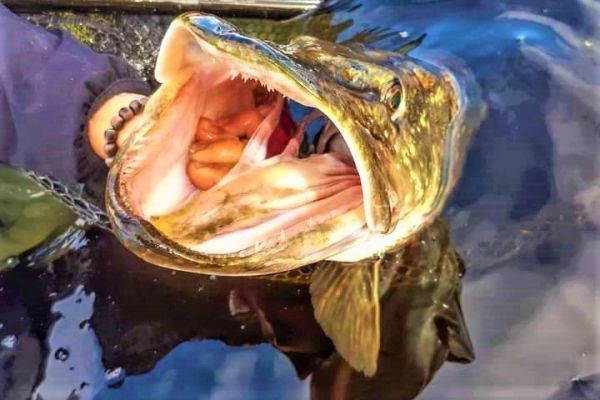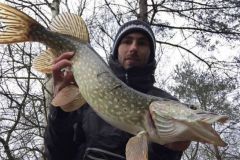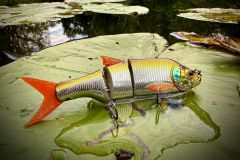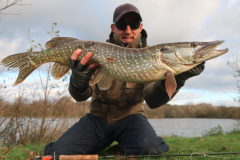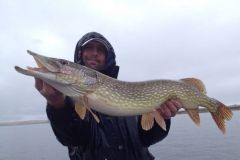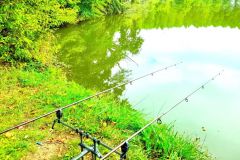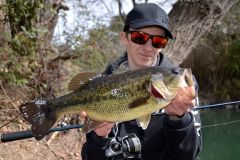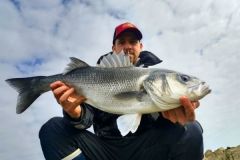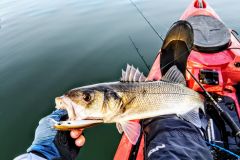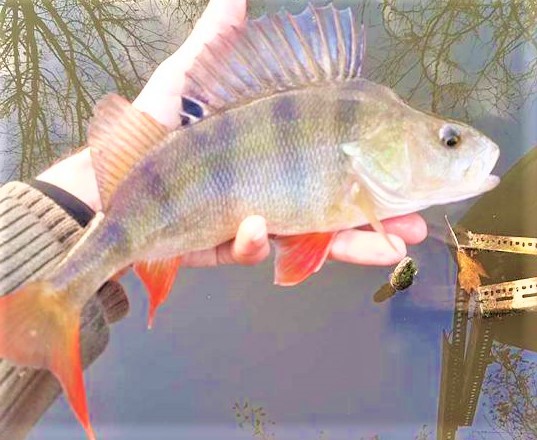
Perch with swimming fish
The perch is a formidable predator that loves fry or other small fish. As soon as a small swimming fish is presented, it reacts instantly and rises in the water to intercept it. The swim of the lure must be sufficiently demonstrative for this beautiful zebra to intercept it and offer a powerful strike.
After casting, place the rod in the down position and retrieve. Then, by placing small strokes of the wrists on the side so that the lure loses its swimming line, the swimmer fish will show its flanks and will attract the beautiful zebrafish from afar. As soon as you bite a perch, don't change position, but cast immediately. Living in a more or less dense school, it is not uncommon that the catches follow each other very quickly.
For the equipment, a rod of 2,10 m and a power of 3 to 10 grams offering a good sensitivity at the level of the tip is necessary. A reel with a 14 to 18 hundredths tip and a 3 to 7 cm swimmer fish, depending on the position and the depth, will do the trick.
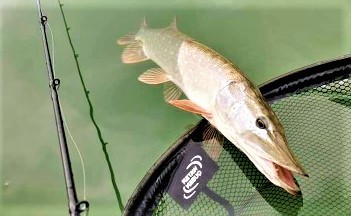
Pikelets in a small dish
During the last warm days of autumn, the gregarious instinct is reinforced in the fry which patrol in sometimes immense shoals under the surface, high above the shallows and along the edges. This opportunity does not escape the pike, which often selects this type of prey to the exclusion of all others. The logical response to this behavior is to refine its setups and reduce the size of the lures, a strategy known as downsizing.
A small spinning rod brought back to shallow water, especially a minnow model, can bring you nice fish, as long as you use the indispensable fluorocarbon stack to avoid cuts. And not to fall into the exaggeration concerning the diameter of the line, which in nylon, should not be lower than 20 hundredths.
For the equipment, choose a light casting rod of 10 to 30 grams, a reel equipped with nylon 20 to 28 centimeters or braid in 8 to 10 centimeters. The fluorocarbon leader should not be less than 60 hundredths or face immediate punishment.
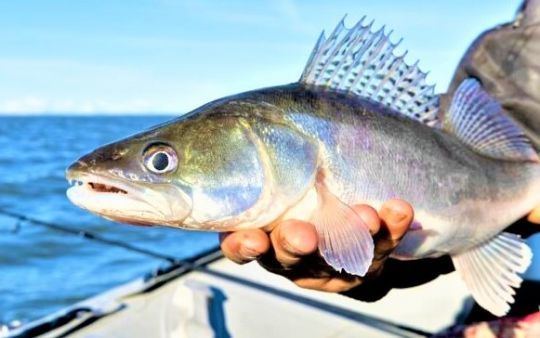
Pike perch with rippling spoon from the edge
In this month of November, the pike perch are very active. The young whites of the year are frolicking all around the obstacles and not far from the edges. I invite you to try a very pleasant and yet very little practiced technique for pikeperch: fishing with a spoon from the shore.
It doesn't matter what the spoon is, as long as it's silver white, no frills, and a size 2. To be more precise, if it says Aglia Mepps on it, it's perfect.
Work your lure smoothly at all water heights without confining yourself to the bottom. Pike-perch are not constantly there. Multiply the lateral gaps and the short releases and fish until your feet.
Keep a small supply of spoons on hand, as you can lose some while luring a pike.
The equipment will be classic with a tip action cast, a reel lined with braid (8 or 12 strands in 8 hundredths) or nylon (16 to 20 hundredths) according to your habits and a fluorocarbon leader in 30 hundredths.

 /
/ 